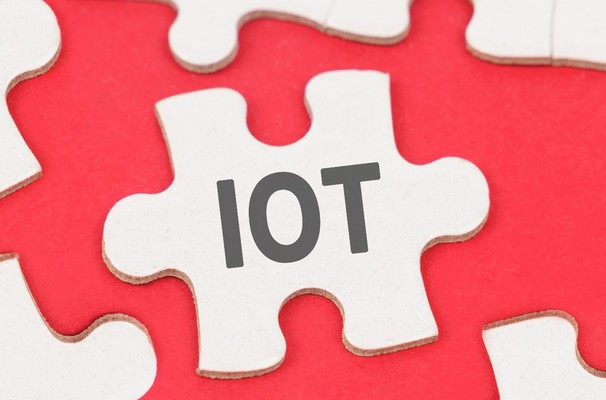
Looking Ahead at Cybersecurity Draft books soon after the law passed December 2020 that discussed the suitable security conditions for IoT apparatus. The drafts covered exactly what agencies will need to search for to make sure their devices are protected and how producers should configure devices they create for the national government. Following that, interested parties need to remain abreast of any changes to the drafts and examine the final NIST criteria and guidelines to guarantee compliance.
Contractors and subcontractors, it is going to mean closely monitoring and integrating printed security standards and instructions from NIST, in addition to being ready to receive and act on information about possible security vulnerabilities obtained from national agencies regarding systems and devices, and disseminate data on settlements for all those vulnerabilities. However, the Act may also set realized best practices for IoT apparatus, causing wider adoption in the private industry. Meanwhile, NIST has started developing the criteria and guidelines which will flow from the Act.
For more Within 90 days after The Act requires NIST to make guidelines and criteria for handling national IoT apparatus by early March 2021. These guidelines must cover the exceptional cybersecurity dangers which IoT devices may have and set minimum safety standards for these issues. The NIST also has to examine and review its standards every five years to maintain any new data issues.
180 days after enactment, the Director must publish recommendations for coverage, organizing, publishing, and getting of information regarding security vulnerabilities concerning data systems owned or controlled by an agency (like IoT apparatus ) and resolving those vulnerabilities. The Director also has to offer advice for builders and subcontractors on getting advice on possible information system vulnerabilities and distributing information about settlements.
The Fundamentals Banned from Additionally, in Having discussions The National
The framework is made for the proper use and management with national agencies of IoT apparatus possessed or controlled by an agency and linked to data systems owned or controlled by an agency. Moving forward, each IoT apparatus you ever received for Christmas? Bright gizmos aren't solely for the house, roughly 25 percent of companies use the Internet of Things (IoT) technologies, a guess just expected to grow considerably. With that expansion will be new and diverse applications for IoT engineering, together with a need to comprehend the different sorts of dangers it poses. The Act is aimed at national agencies but is very likely to have a substantial influence from the private sector too.
Environment. Setting up that fresh The NIST was additionally Compliance with national laws, read our website titled The significance of Information Governance in Today's Regulatory Track is the way the IoT Cybersecurity Improvement Act affects other laws in the U.S. and across boundaries. California and Oregon passed IoT legislation in 2020 that controlled security attributes on devices that were connected. Now there is a national law in place, there can be an increase in private and state business IoT regulations. This could likely start with producers deciding to employ the same safety standards afforded to national authorities apparatus throughout the board to keep procedures uniform. This trend could continue on a worldwide scale. Regardless, do not forget that technology is growing at a fast pace, which will affect what the NIST determines to be proper concerning safety and will set the stage for future laws that seem both stateside and overseas.

Another thing to Advice about the best way best to execute a data governance program that guarantees Participants involved with national IoT devices must understand their responsibilities and role. Federal agencies will need to make certain that all apparatus they buy and use align with all the IoT criteria and guidelines in the NIST. Designating a person or staff to reassess safety settings or working with the DHS and OMB are two paths to research to help achieve compliance. Promulgating consistent policies and processes of reviewing security and fixing device vulnerabilities is a vital step in this procedure.
With present contractors and subcontractors concerning the new demands is necessary and needs to be continuing to guarantee everyone is aware of what's expected and what the proper steps would be to tackle almost any cybersecurity shortcomings. Before awarding a contract or procuring a brand new IoT apparatus, all agencies need to check compliance and select different paths when compliance this isn't present or uncertain. Contractors also must take independent actions to abide by the NIST standards and guidelines. The simplest method is to work together with their government service partners to embrace any new policies or processes. Transparency, communication, and cooperation will keep everyone on precisely the same page and induce powerful compliance.
The NIST published For federal
Another significant legislation outlines security demands that the national Internet of Things (IoT) apparatus will need to include going forward. Broadly, IoT identifies any devices which are connected to your system that may share and analyze information. A few IoT examples are smart telephones, action trackers, smart health care apparatus, and building security systems. The law isn't a surprise, particularly since cybersecurity reform continues to be trending worldwide as a consequence of the planet becoming digitized. Since IoT devices may be exposed to electronic attacks, they ought to be protected to be able to guard sensitive information. The advantage of the law develops farther than simply government agencies, but also to producers producing national IoT apparatus and some other government contractors utilizing IoT devices. Any individual or entity subject to this law must comprehend the duties imposed and keep abreast of applicable upgrades.
As mentioned, Manufacturers making apparatus for national government agencies will also be subject to this law. A best practice for producers would be to begin revising procedures dependent on the draft NIST advice so that it can be prepared to go if the last version is printed. Manufacturing is a complex procedure, and it might take a while to roll out new procedures and train workers. Federal contractors and agencies should take exactly the identical proactive approach, as nobody anticipates major modifications to arise from the finalized version of the NIST standards and guidelines. Whether any alterations would impact new policies or plans, it wouldn't be hard to change policies or plans in the event the significant legwork is already finished.
Directed to utilize the Department of Homeland Security (DHS), business specialists from the private industry, and safety researchers to ascertain the best method to report security vulnerabilities existing on IoT apparatus and the way to correct those issues. This has to be done no later than 180 days following the NIST publishes their advice. DHS and OMB will also have to work together with other national agencies and builders regarding how to take care of security flaws and the way to satisfactorily stick to the NIST rules.
